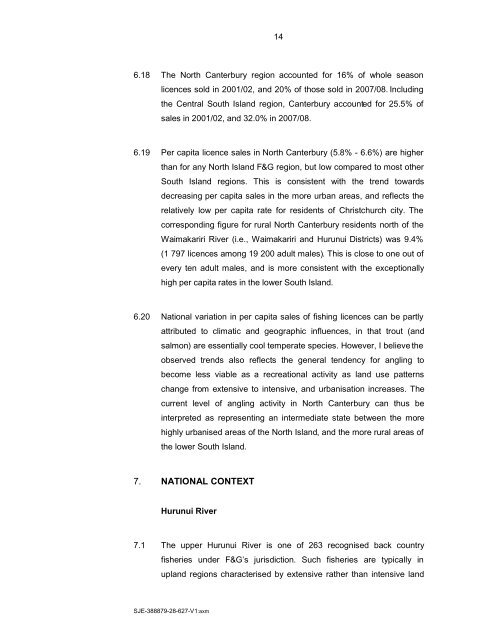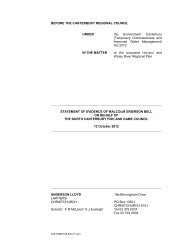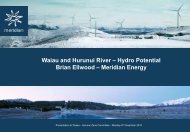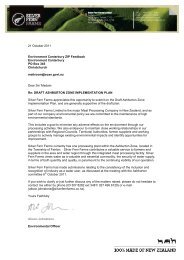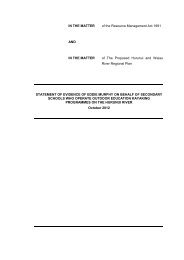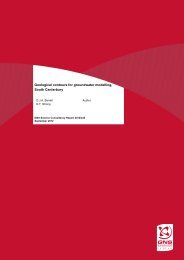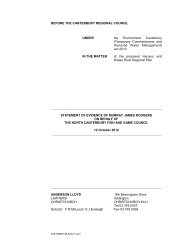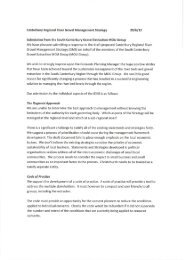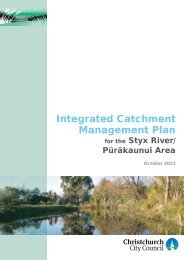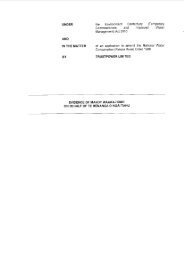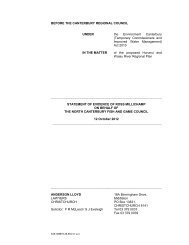Evidence of Martin Unwin - Environment Canterbury
Evidence of Martin Unwin - Environment Canterbury
Evidence of Martin Unwin - Environment Canterbury
You also want an ePaper? Increase the reach of your titles
YUMPU automatically turns print PDFs into web optimized ePapers that Google loves.
146.18 The North <strong>Canterbury</strong> region accounted for 16% <strong>of</strong> whole seasonlicences sold in 2001/02, and 20% <strong>of</strong> those sold in 2007/08. Includingthe Central South Island region, <strong>Canterbury</strong> accounted for 25.5% <strong>of</strong>sales in 2001/02, and 32.0% in 2007/08.6.19 Per capita licence sales in North <strong>Canterbury</strong> (5.8% - 6.6%) are higherthan for any North Island F&G region, but low compared to most otherSouth Island regions. This is consistent with the trend towardsdecreasing per capita sales in the more urban areas, and reflects therelatively low per capita rate for residents <strong>of</strong> Christchurch city. Thecorresponding figure for rural North <strong>Canterbury</strong> residents north <strong>of</strong> theWaimakariri River (i.e., Waimakariri and Hurunui Districts) was 9.4%(1 797 licences among 19 200 adult males). This is close to one out <strong>of</strong>every ten adult males, and is more consistent with the exceptionallyhigh per capita rates in the lower South Island.6.20 National variation in per capita sales <strong>of</strong> fishing licences can be partlyattributed to climatic and geographic influences, in that trout (andsalmon) are essentially cool temperate species. However, I believe theobserved trends also reflects the general tendency for angling tobecome less viable as a recreational activity as land use patternschange from extensive to intensive, and urbanisation increases. Thecurrent level <strong>of</strong> angling activity in North <strong>Canterbury</strong> can thus beinterpreted as representing an intermediate state between the morehighly urbanised areas <strong>of</strong> the North Island, and the more rural areas <strong>of</strong>the lower South Island.7. NATIONAL CONTEXTHurunui River7.1 The upper Hurunui River is one <strong>of</strong> 263 recognised back countryfisheries under F&G’s jurisdiction. Such fisheries are typically inupland regions characterised by extensive rather than intensive landSJE-388879-28-627-V1:axm


